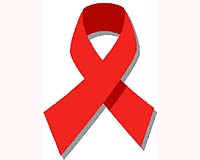| . |  |
. |
Geneva (AFP) Sept 25, 2009 The World Health Organisation said Friday that anti-viral drugs should not be used to prevent swine flu, noting that almost half of drug resistance cases were linked to use of the medication before infection. "The risk of resistance is... considered higher in people who receive oseltamivir for so-called 'post-exposure prophylaxis' following exposure to another person with influenza and who then develop illness despite taking oseltamivir," said the UN agency in a statement. Oseltamivir is more commonly known as Tamiflu, and is the drug recommended by the WHO in swine flu treatments. The UN agency said that 12 out of 28 cases of drug resistance to Tamiflu has been linked to prophylactic use. Six other resistance cases occurred in patients with severe immunosuppression and four occurred in those who were using Tamiflu as a treatment. A further two resistance cases were identified in people who were neither using Tamiflu for prophylactic nor treatment, said the WHO, which added that those who show resistance to Roche's Tamiflu should then take an alternative anti-viral, GlaxoSmithKline's Relenza. Overall, the number of drug-resistance cases were "sporadic and infrequent," said the WHO. "In general, WHO does not recommend the use of anti-viral drugs for prophylactic purposes," it added. "For people who have had exposure to an infected person and are higher risk of developing severe or complicated illness, an alternative option is close monitoring for symptoms, followed by prompt early anti-viral treatment should symptoms develop," it said.
earlier related report "The European Medicines Agency has recommended to the European Commission that two vaccines against influenza A(H1N1) be granted a marketing authorisation," the London-based EMEA said in a statement. The assessment of the two vaccines -- Pandemrix and Focetria -- was pushed through by EMEA amid mounting concern about the upcoming winter influenza season and an upturn in British cases of swine flu. A decision from the European Commission would be due "shortly" on their use across the 27-nation European Union, the EMEA added. The British Department of Health said the news was a "step forward" in tackling swine flu, adding that vaccinations were scheduled to begin next month in Britain, which is the hardest-hit country in Europe by the virus. "This is a welcome step forward in our plans for tackling swine flu -- but we are still dependant on production and delivery of sufficient vaccine to start protecting people," a spokesman said. "We plan to start vaccination in October, subject to vaccine being licensed and manufacturers' delivery schedules. "This is not the Department of Health's schedule -- it is led by the manufacturers." The new development comes as the number of new swine flu cases in Britain almost doubled in a week, in the second weekly increase following a summer lull, according to official British date released this week. The Pandemrix vaccine was produced by British pharmaceutical group GlaxoSmithKline, while Focetria has been developed by Swiss peer Novartis. A third vaccine, Celvapan, made by drugs firm Baxter, should be approved shortly, an EMEA spokesman said, adding: "We are working very hard with the company and will be able to resolve the remaining problem in the next week." "Decisions on the granting of European Union-wide marketing authorisations for the vaccines by the European Commission are expected shortly," EMEA added in a statement. Further data from ongoing clinical studies would be received in the coming months on the two drugs, it added. "Vaccines are one of the most important tools in the management of an influenza pandemic, helping to reduce illness and deaths by building up immune protection against the pandemic flu virus," the EMEA said. "To ensure that authorised vaccines are available before the start of the flu season in the coming autumn and winter months, the Agency's Committee for Medicinal Products for Human Use expedited its assessment." Experts have warned of a second wave of flu as the northern hemisphere winter nears. On Thursday, the World Health Organization said pharmaceutical firms can produce only three billion doses of swine flu vaccines a year, covering less than half of the global population. However, tests on the vaccine show that just one jab would offer sufficient protection against the A(H1N1) virus and that the vaccine is as safe as seasonal flu vaccines, the UN agency added. At least 3,917 people have died from the A(H1N1) virus since it was uncovered in April, according to the WHO's weekly bulletin issued Friday. There have been 2,948 fatalities in the Americas region. Share This Article With Planet Earth
Related Links Epidemics on Earth - Bird Flu, HIV/AIDS, Ebola
 AIDS breakthrough as vaccine cuts infections for first time
AIDS breakthrough as vaccine cuts infections for first timeBangkok (AFP) Sept 24, 2009 An experimental AIDS vaccine has for the first time cut the risk of infection in humans in what scientists Thursday called a "breakthrough" in the quarter-century fight against the epidemic. The vaccine reduced the chance of being infected by a third, researchers announced after the world's largest trial of 16,000 volunteers, carried out by the US Army and Thailand's Ministry of Public ... read more |
|
| The content herein, unless otherwise known to be public domain, are Copyright 1995-2009 - SpaceDaily. AFP and UPI Wire Stories are copyright Agence France-Presse and United Press International. ESA Portal Reports are copyright European Space Agency. All NASA sourced material is public domain. Additional copyrights may apply in whole or part to other bona fide parties. Advertising does not imply endorsement,agreement or approval of any opinions, statements or information provided by SpaceDaily on any Web page published or hosted by SpaceDaily. Privacy Statement |